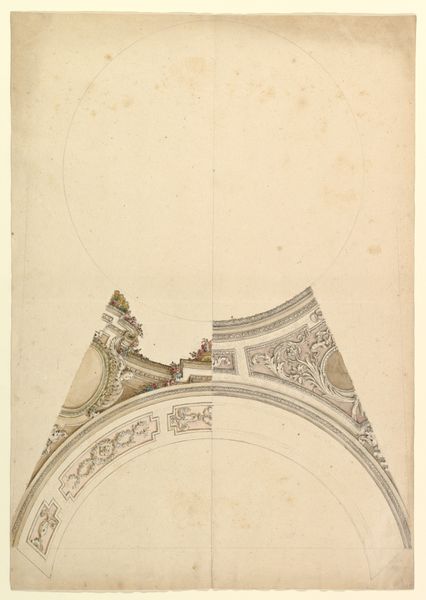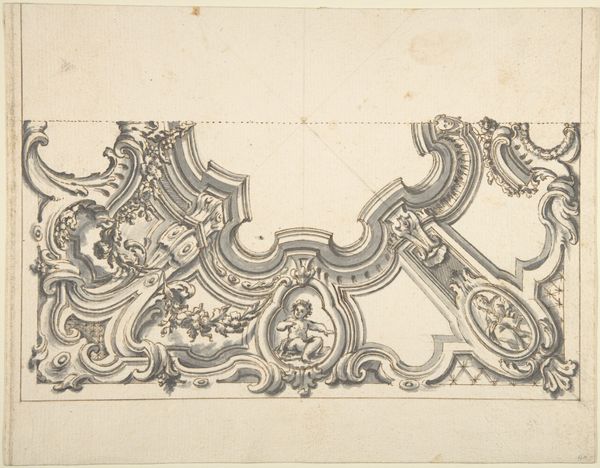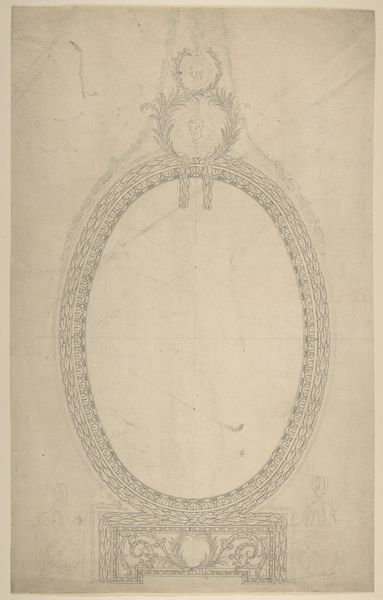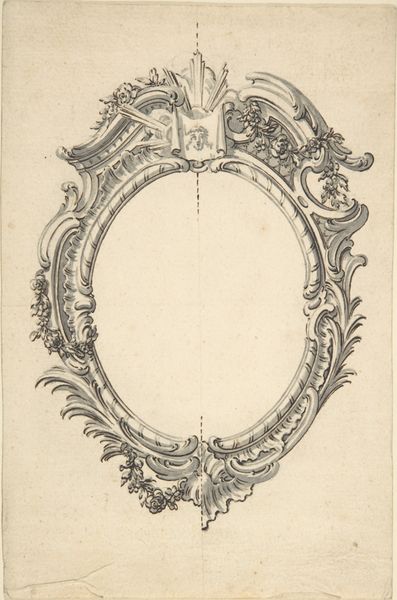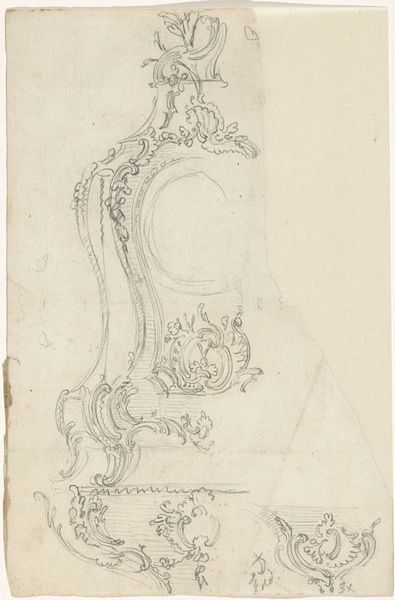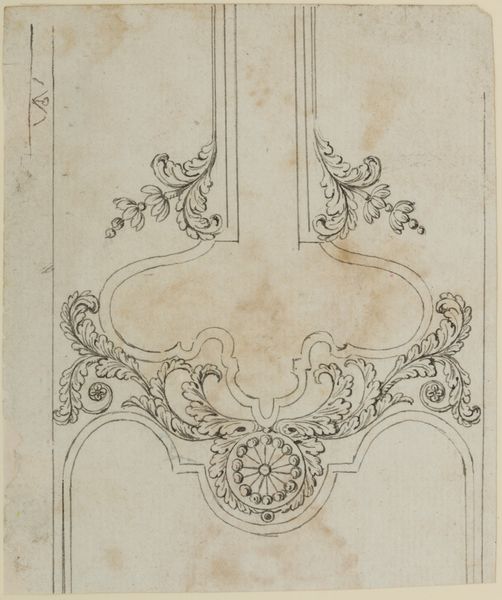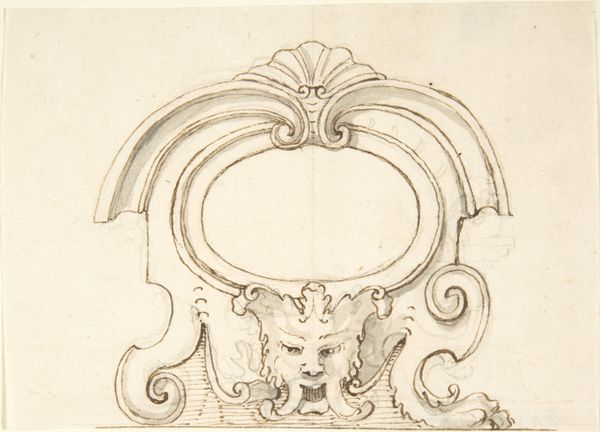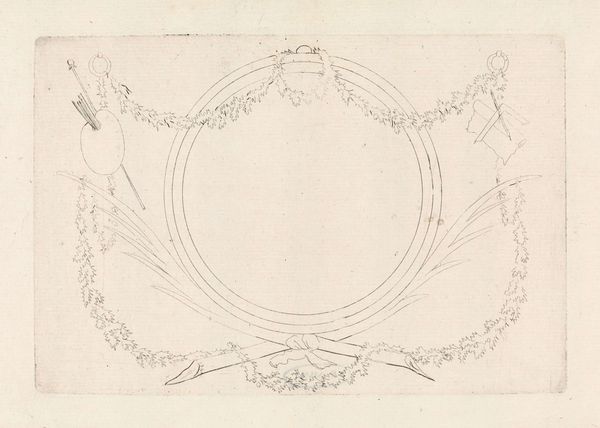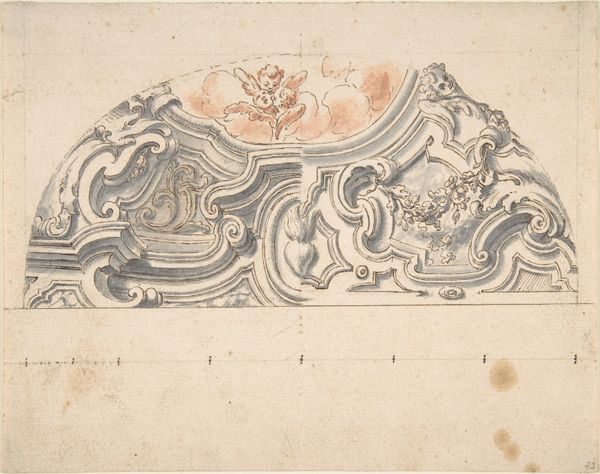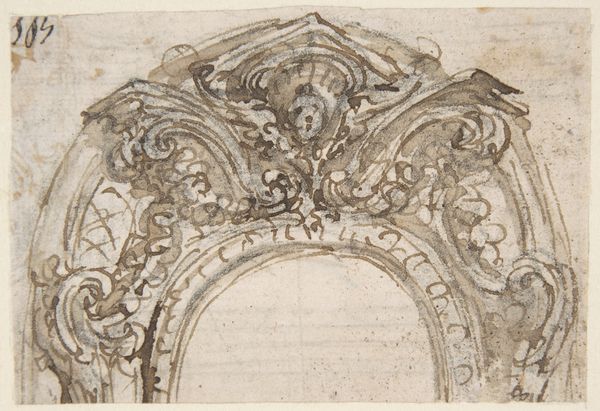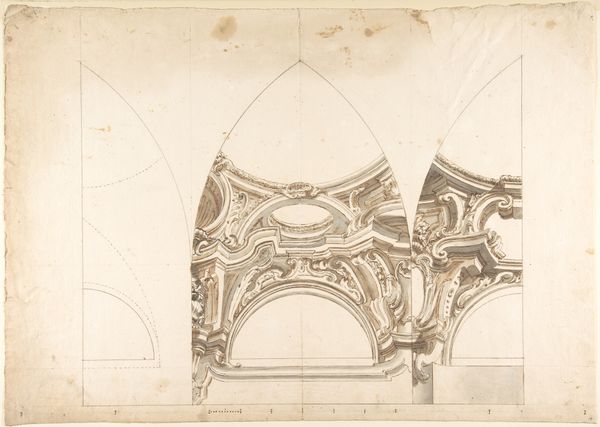
drawing, ink, architecture
#
drawing
#
ink
#
architecture
Dimensions: 15 3/16 x 11 1/8 in. (38.5 x 28.2 cm)
Copyright: Public Domain
Curator: This architectural drawing, made sometime between 1700 and 1780, presents two alternate designs for a pendentive. It’s currently held in the collection of the Metropolitan Museum of Art. Editor: Immediately I’m struck by the Rococo flamboyance. So many swirling lines! The designs almost seem to be competing with each other in terms of intricacy. Curator: The fact that it’s rendered in ink underscores its functional nature; it’s a preliminary drawing, not a finished artwork intended for display. Notice how one half shows one design option, and the other half, a different one. Editor: Yes, there's something quite revealing in juxtaposing these alternatives. It suggests a debate, perhaps an internal one within the artist’s own vision of idealized ornamentation. There is, perhaps, some influence from set design tradition. Curator: Set design, exactly! Consider how these pendentive designs likely were meant to operate within the greater context of a whole structure. Each scroll and leaf and flower symbol holds a possible cultural implication. The artist would have been attuned to creating harmonious echoes of established meaning. Editor: You're making me think about how architectural ornamentation reflects shifts in cultural values. A structure incorporating designs such as these might speak to aspirations of grandeur and refined taste. There is an almost propagandistic value within these symbolic meanings! Curator: And it isn't just about political power. These elaborate motifs tell tales of human striving towards the divine. They show spiritual aspiration crystallized into reproducible artistic symbols. The goal is nothing short of capturing eternity in aesthetic form! Editor: Examining these alternative pendentive drawings certainly provides insights into how artists and patrons participated in constructing a very specific vision of 18th-century authority. The social performance of this art extends far beyond a simple structural design. Curator: Agreed. This artwork functions as both a plan and an indicator of a broader political ethos. Editor: In essence, these inky curlicues hold historical depth beyond aesthetics.
Comments
No comments
Be the first to comment and join the conversation on the ultimate creative platform.
